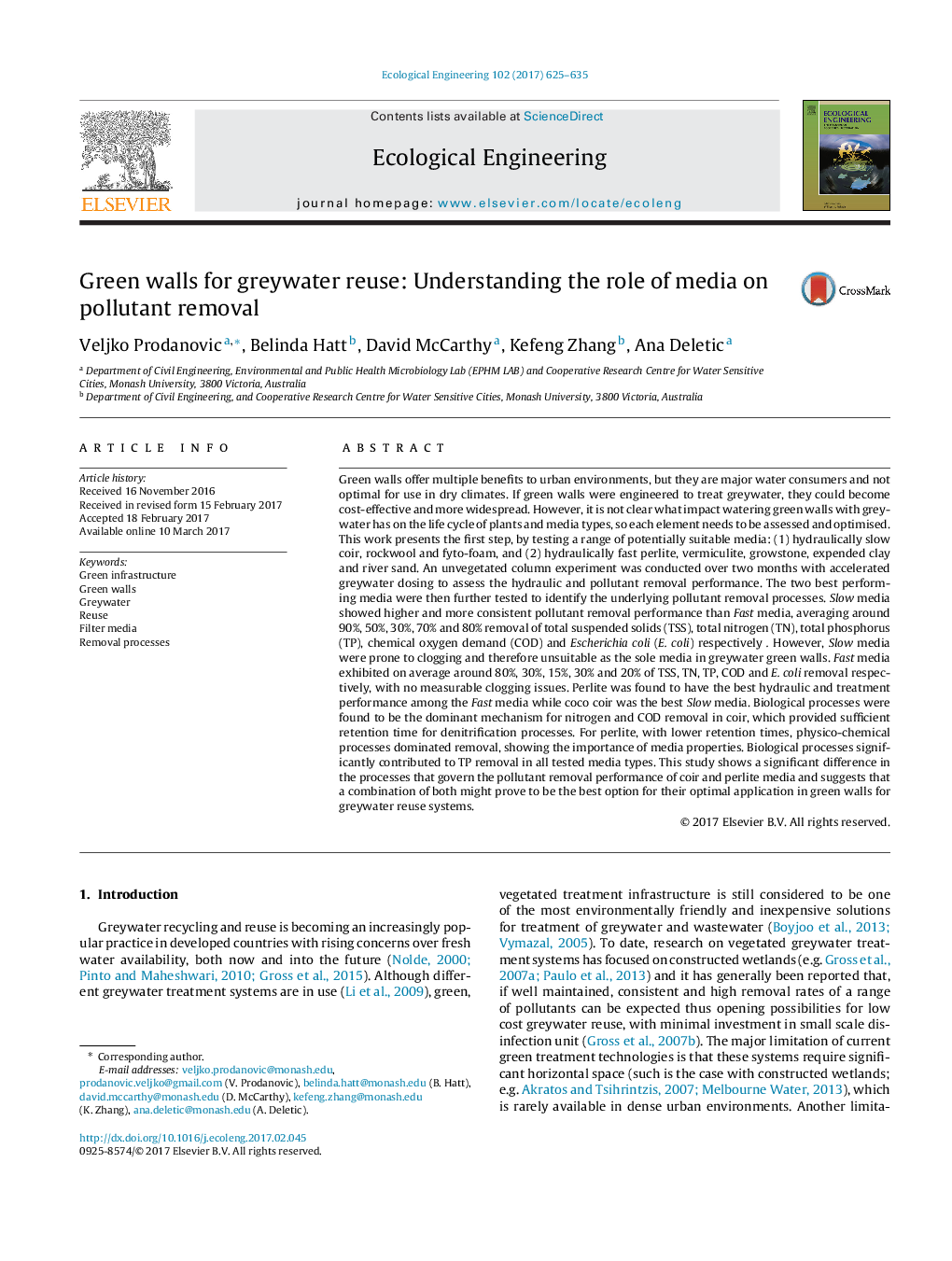| Article ID | Journal | Published Year | Pages | File Type |
|---|---|---|---|---|
| 5743809 | Ecological Engineering | 2017 | 11 Pages |
â¢Coco coir and perlite show good potential for use in greywater treating green walls.â¢Physico-chemical processes dominated TN and COD removal in perlite and sand.â¢Experiments showed important role of biological processes on TP removal.â¢Appropriate mix of coco coir and perlite needs to be evaulated in the future.
Green walls offer multiple benefits to urban environments, but they are major water consumers and not optimal for use in dry climates. If green walls were engineered to treat greywater, they could become cost-effective and more widespread. However, it is not clear what impact watering green walls with greywater has on the life cycle of plants and media types, so each element needs to be assessed and optimised. This work presents the first step, by testing a range of potentially suitable media: (1) hydraulically slow coir, rockwool and fyto-foam, and (2) hydraulically fast perlite, vermiculite, growstone, expended clay and river sand. An unvegetated column experiment was conducted over two months with accelerated greywater dosing to assess the hydraulic and pollutant removal performance. The two best performing media were then further tested to identify the underlying pollutant removal processes. Slow media showed higher and more consistent pollutant removal performance than Fast media, averaging around 90%, 50%, 30%, 70% and 80% removal of total suspended solids (TSS), total nitrogen (TN), total phosphorus (TP), chemical oxygen demand (COD) and Escherichia coli (E. coli) respectively . However, Slow media were prone to clogging and therefore unsuitable as the sole media in greywater green walls. Fast media exhibited on average around 80%, 30%, 15%, 30% and 20% of TSS, TN, TP, COD and E. coli removal respectively, with no measurable clogging issues. Perlite was found to have the best hydraulic and treatment performance among the Fast media while coco coir was the best Slow media. Biological processes were found to be the dominant mechanism for nitrogen and COD removal in coir, which provided sufficient retention time for denitrification processes. For perlite, with lower retention times, physico-chemical processes dominated removal, showing the importance of media properties. Biological processes significantly contributed to TP removal in all tested media types. This study shows a significant difference in the processes that govern the pollutant removal performance of coir and perlite media and suggests that a combination of both might prove to be the best option for their optimal application in green walls for greywater reuse systems.
Graphical abstractDownload high-res image (426KB)Download full-size image
